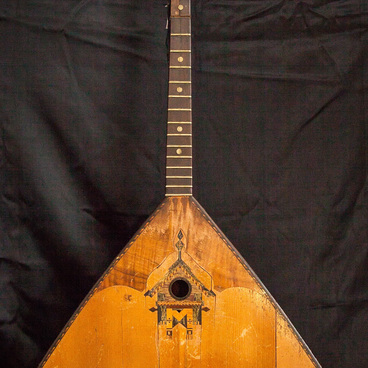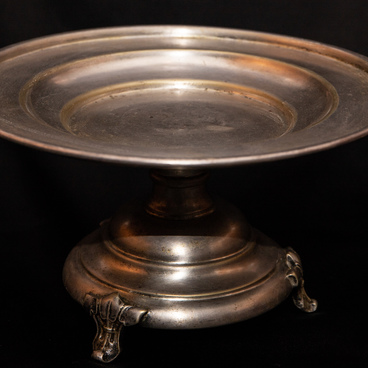The shot glass from the collection of the Romanovs Museum is a small hemispherical bowl on a carved leg. It is made of transparent glass; the bottom is tinted green so that the vessel and the drink in it play brighter in the light.
The wall of the glass is decorated with engraving — the imperial crown and the personal monogram of Tsesarevich Nikolai Alexandrovich, which consists of the intertwined initials of the heir.
Monogrammed tableware was made specifically for members of the imperial family. For guests and courtiers, they manufactured sets with other designs, without monograms.
This glass was made at the Imperial Porcelain Factory. That enterprise was established in 1744 by order of Empress Elizabeth Petrovna. By the 19th century, the factory had become one of the largest in Europe.
For several centuries, the Imperial Porcelain Factory produced not only porcelain and earthenware sets for the royal house but glassware as well. The tableware was transferred to the Marshal of the Court Section of the Court Administration. That service ensured that it was properly stored in the pantries, always intact and clean, served in accordance with the ceremonial.
In addition, employees of the Marshal of the Court Section made sure that the ‘current loss’ was timely filled up and they created new sketches of glasses and cups for the imperial factory. The designs were approved by the Imperial Committee of the Court Administration. Then they were passed to glass and porcelain masters.
In the 18th-19th centuries, crystal and thin glass products in Russia were considered expensive and valuable goods. They were most often used by noble families and at the imperial court. If a set was not made for the royal family, then those items that were intended for the head of the family were decorated with a monogram. Crystal shot and wine glasses were often complemented by decanters made in the same style. Crystal products were decorated with carvings or cut to make light play brighter on them.
Ordinary citizens bought shot and drinking glasses of thicker cheap glass, copper or tin. In the countryside, people typically made do with wood or clay tableware.
The wall of the glass is decorated with engraving — the imperial crown and the personal monogram of Tsesarevich Nikolai Alexandrovich, which consists of the intertwined initials of the heir.
Monogrammed tableware was made specifically for members of the imperial family. For guests and courtiers, they manufactured sets with other designs, without monograms.
This glass was made at the Imperial Porcelain Factory. That enterprise was established in 1744 by order of Empress Elizabeth Petrovna. By the 19th century, the factory had become one of the largest in Europe.
For several centuries, the Imperial Porcelain Factory produced not only porcelain and earthenware sets for the royal house but glassware as well. The tableware was transferred to the Marshal of the Court Section of the Court Administration. That service ensured that it was properly stored in the pantries, always intact and clean, served in accordance with the ceremonial.
In addition, employees of the Marshal of the Court Section made sure that the ‘current loss’ was timely filled up and they created new sketches of glasses and cups for the imperial factory. The designs were approved by the Imperial Committee of the Court Administration. Then they were passed to glass and porcelain masters.
In the 18th-19th centuries, crystal and thin glass products in Russia were considered expensive and valuable goods. They were most often used by noble families and at the imperial court. If a set was not made for the royal family, then those items that were intended for the head of the family were decorated with a monogram. Crystal shot and wine glasses were often complemented by decanters made in the same style. Crystal products were decorated with carvings or cut to make light play brighter on them.
Ordinary citizens bought shot and drinking glasses of thicker cheap glass, copper or tin. In the countryside, people typically made do with wood or clay tableware.



